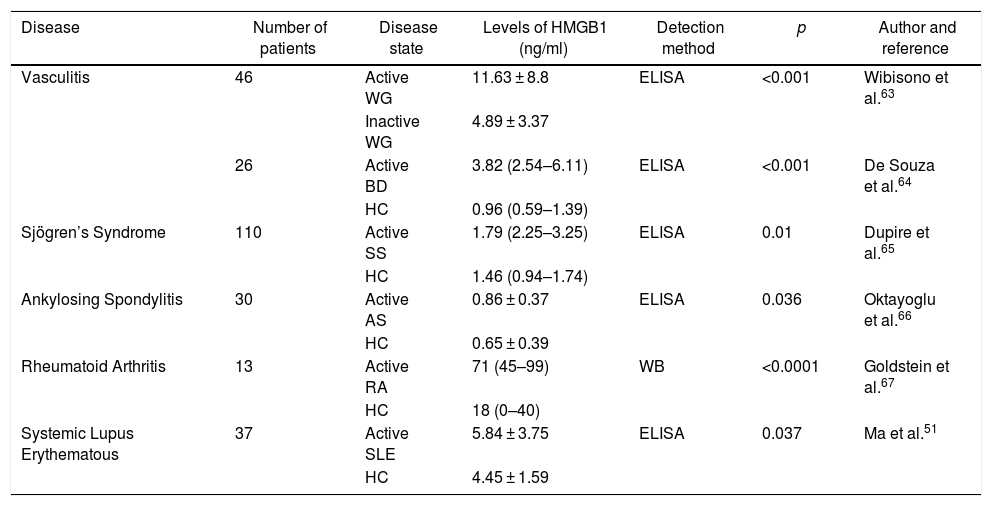The high mobility group box 1 proteins (HMGB1) are non-histone nuclear proteins reported to be present at high levels in some autoimmune diseases, such as systemic lupus erythematosus (SLE). Likewise, in contrast to healthy individuals, patients with SLE have a higher prevalence of anti-HMGB1 antibodies, and these levels have also been associated with heightened disease activity. This article will discuss the involvement of these proteins in immunology, and review the evidence supporting their clinical importance in SLE.
Materials and methodsA narrative review was conducted based on a search of the literature up to October 2018, of articles describing the function, structure, prevalence and importance of HMGB1 in different manifestations of SLE. Articles focusing on the presence of HMGB1 and/or its antibodies in patients with SLE or other autoimmune diseases were also reviewed.
ResultsA total of 69 articles were found. These articles were the foundation to define the structure and functions of HMBG1, including its role as a cytokine released by immune cells in inflammatory processes and necrosis. Additionally, a description of its functions in phagocytosis and NETosis - that have an impact on autoimmune diseases, primarily in SLE - was included.
ConclusionHMGB1 proteins and anti-HMGB1 antibodies are elevated in the serum of patients with SLE, in contrast with healthy individuals or non-severe presentations of the disease; this suggests that they may play a role as a biomarker of disease activity.
Las high mobility group box 1 protein (HMGB1, «proteínas de alta movilidad del grupo 1») son proteínas nucleares no histonas cuyos niveles se han documentado elevados en ciertas enfermedades autoinmunes, como el lupus eritematoso sistémico (LES). Igualmente, los pacientes con LES presentan una mayor prevalencia de anticuerpos anti-HMGB1 comparados con individuos sanos, al mismo tiempo que se han relacionado sus niveles con una mayor actividad de la enfermedad. En este artículo se revisará la participación de estas proteínas en la inmunología y se abordará la evidencia que sustenta su importancia clínica en el LES.
Materiales y métodosSe realizó una revisión narrativa basada en la búsqueda de la literature hasta octubre de 2018, de artículos que describieran la función, estructura, prevalencia e importancia de las HMGB1 en diferentes manifestaciones del LES, así como artículos que hayan estudiado la presencia de las HMGB1 o sus anticuerpos en pacientes con LES u otras enfermedades autoinmunes.
ResultadosSe encontraron un total de 69 artículos. Con base en ellos definimos la estructura y funciones de las HMBG1, incluyendo su papel como citocina liberada por células inmunes en procesos inflamatorios y en necrosis. Adicionalmente, describimos sus funciones en la fagocitosis y NETosis, que genera implicaciones en enfermedades autoinmunes, principalmente en el LES.
ConclusiónLas proteínas HMGB1 y los anticuerpos anti-HMGB1 se encuentran elevados en suero de pacientes con LES comparados con individuos sanos o con formas no severas de la enfermedad, evidenciando que estas pueden comportarse como un biomarcador de actividad de la enfermedad.








